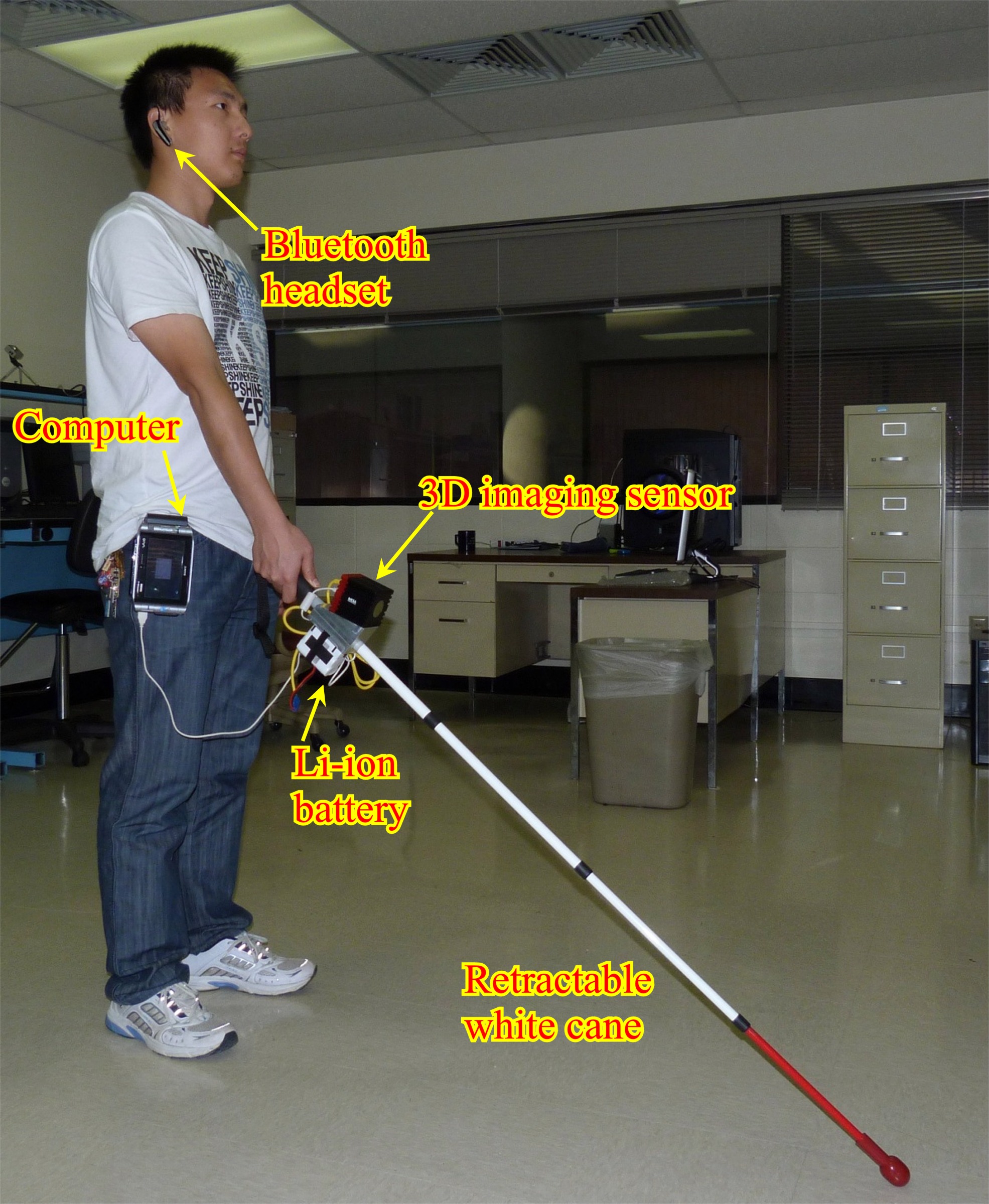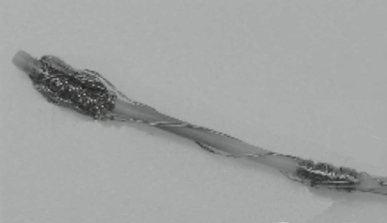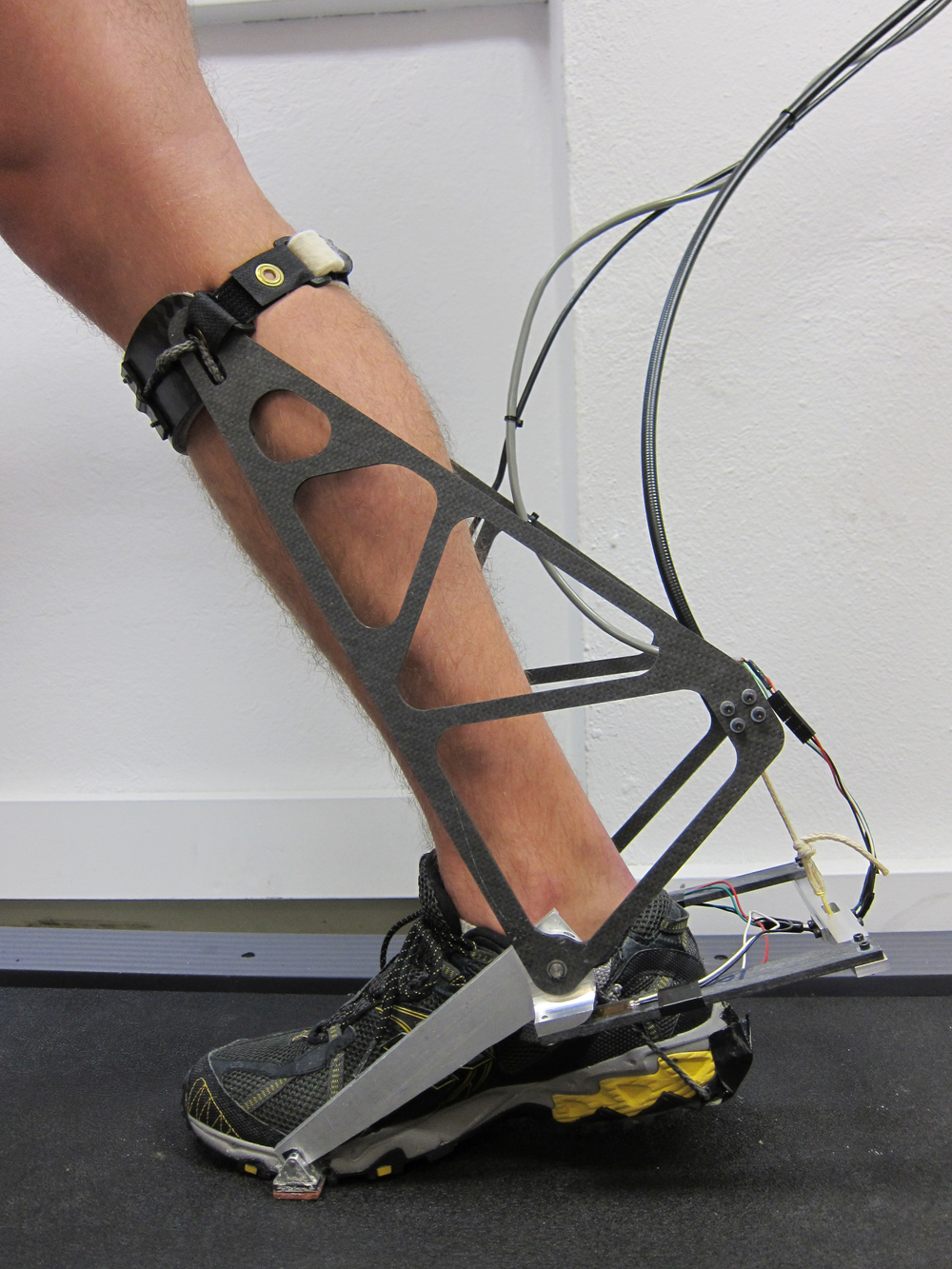Robots designed to assist people with disabilities, aid doctors
Robots enhance mobility for visually and physically impaired, improve treatment for atrial fibrillation
October 28, 2013
Three projects have been awarded funding by the National Institutes of Health to develop
innovative robots that work cooperatively with people and adapt to
changing environments to improve human capabilities and enhance medical
procedures. Funding for these projects totals approximately $2.4 million
over the next five years, subject to the availability of funds.
The awards mark the second year of NIH’s participation in the National Robotics Initiative (NRI), a commitment among multiple federal agencies to support the development of a new generation of robots that work cooperatively with people, known as co-robots, including the National Science Foundation, NASA, and the U.S. Department of Agriculture.
NIH has funded three projects to help develop co-robots that can assist researchers, patients, and clinicians.
 A Co-Robotic Navigation Aid for the Visually Impaired
A Co-Robotic Navigation Aid for the Visually Impaired
The goal is to develop a co-robotic cane for the visually impaired that has enhanced navigation capabilities and that can relay critical information about the environment to its user.
Using computer vision, the proposed cane will be able to recognize indoor structures such as stairways and doors, as well as detect potential obstacles. Using an intuitive human-device interaction mechanism, the cane will then convey the appropriate travel direction to the user.
This technology could also lead to general improvements in the autonomy of small robots and portable robotics that have many applications in military surveillance, law enforcement, and search and rescue efforts. University of Arkansas at Little Rock (co-funded by the National Institute of Biomedical Imaging and Bioengineering and the National Eye Institute).
 MRI-Guided Co-Robotic Active Catheter
MRI-Guided Co-Robotic Active Catheter
Atrial fibrillation is an irregular heartbeat that can increase the risk of stroke and heart disease. By purposefully ablating (destroying) specific areas of the heart in a controlled fashion, the propagation of irregular heart activity can be prevented.
This is generally achieved by threading a catheter with an electrode at its tip through a vein in the groin until it reaches the patient’s heart. However, the constant movement of the heart as well as unpredictable changes in blood flow can make it difficult to maintain consistent contact with the heart during the ablation procedure, occasionally resulting in too large or too small of a lesion.
The aim is to develop a co-robotic catheter that compensates for physiological movements of the heart and blood and that can be used while a patient undergoes MRI. By combining state-of-the art robotics with high-resolution, real-time imaging, the co-robotic catheter could significantly increase the accuracy and repeatability of atrial fibrillation ablation procedures. Case Western Reserve University, Cleveland (funded by the National Institute of Biomedical Imaging and Bioengineering).
 Novel Platform for Rapid Exploration of Robotic Ankle Exoskeleton Control
Novel Platform for Rapid Exploration of Robotic Ankle Exoskeleton Control
This project proposes to create an experimental platform for an assistive ankle robot to be used in patients recovering from stroke. The platform will allow investigators to systematically test various robotic control methods and to compare them based on measurable physiological outcomes.
Results from these tests will provide evidence for making more effective, less expensive, and more manageable assistive technologies. North Carolina State University and Carnegie Mellon University (co-funded by the National Institute of Nursing Research and the National Science Foundation).
The awards mark the second year of NIH’s participation in the National Robotics Initiative (NRI), a commitment among multiple federal agencies to support the development of a new generation of robots that work cooperatively with people, known as co-robots, including the National Science Foundation, NASA, and the U.S. Department of Agriculture.
NIH has funded three projects to help develop co-robots that can assist researchers, patients, and clinicians.

Co-robotic cane prototype (credit: Cang Ye, University of Arkansas at Little Rock)
The goal is to develop a co-robotic cane for the visually impaired that has enhanced navigation capabilities and that can relay critical information about the environment to its user.
Using computer vision, the proposed cane will be able to recognize indoor structures such as stairways and doors, as well as detect potential obstacles. Using an intuitive human-device interaction mechanism, the cane will then convey the appropriate travel direction to the user.
This technology could also lead to general improvements in the autonomy of small robots and portable robotics that have many applications in military surveillance, law enforcement, and search and rescue efforts. University of Arkansas at Little Rock (co-funded by the National Institute of Biomedical Imaging and Bioengineering and the National Eye Institute).

Prototype
of MRI-guided co-robotic catheter that could improve treatments for
atrial fibrillation (credit: Mark Griswold, Ph.D., and Natalia Gudino,
Ph.D., Case Western Reserve University)
Atrial fibrillation is an irregular heartbeat that can increase the risk of stroke and heart disease. By purposefully ablating (destroying) specific areas of the heart in a controlled fashion, the propagation of irregular heart activity can be prevented.
This is generally achieved by threading a catheter with an electrode at its tip through a vein in the groin until it reaches the patient’s heart. However, the constant movement of the heart as well as unpredictable changes in blood flow can make it difficult to maintain consistent contact with the heart during the ablation procedure, occasionally resulting in too large or too small of a lesion.
The aim is to develop a co-robotic catheter that compensates for physiological movements of the heart and blood and that can be used while a patient undergoes MRI. By combining state-of-the art robotics with high-resolution, real-time imaging, the co-robotic catheter could significantly increase the accuracy and repeatability of atrial fibrillation ablation procedures. Case Western Reserve University, Cleveland (funded by the National Institute of Biomedical Imaging and Bioengineering).

Ankle
interface for the assistive ankle robot simulator being developed at
North Carolina State and Carnegie Mellon University (credit: Steve
Collins, Carnegie Mellon University)
This project proposes to create an experimental platform for an assistive ankle robot to be used in patients recovering from stroke. The platform will allow investigators to systematically test various robotic control methods and to compare them based on measurable physiological outcomes.
Results from these tests will provide evidence for making more effective, less expensive, and more manageable assistive technologies. North Carolina State University and Carnegie Mellon University (co-funded by the National Institute of Nursing Research and the National Science Foundation).
(¯`*• Global Source and/or more resources at http://goo.gl/zvSV7 │ www.Future-Observatory.blogspot.com and on LinkeIn Group's "Becoming Aware of the Futures" at http://goo.gl/8qKBbK │ @SciCzar │ Point of Contact: www.linkedin.com/in/AndresAgostini
 Washington
Washington